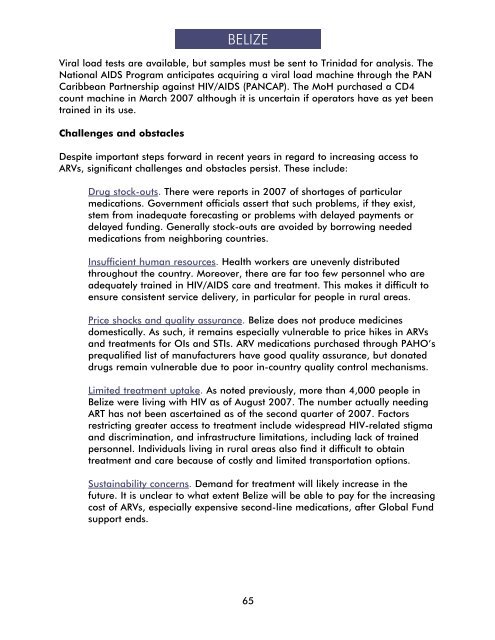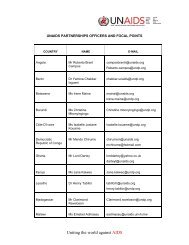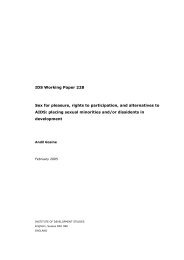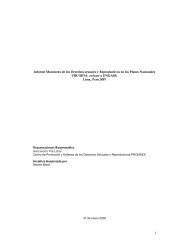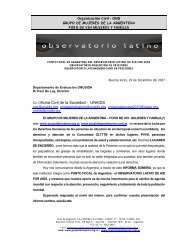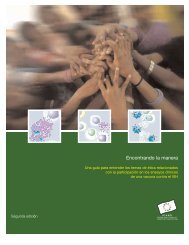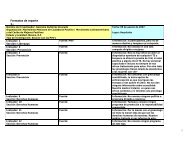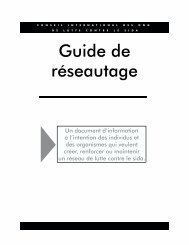Missing the Target #5: Improving AIDS Drug Access ... - CD8 T cells
Missing the Target #5: Improving AIDS Drug Access ... - CD8 T cells
Missing the Target #5: Improving AIDS Drug Access ... - CD8 T cells
You also want an ePaper? Increase the reach of your titles
YUMPU automatically turns print PDFs into web optimized ePapers that Google loves.
Viral load tests are available, but samples must be sent to Trinidad for analysis. TheNational <strong>AIDS</strong> Program anticipates acquiring a viral load machine through <strong>the</strong> PANCaribbean Partnership against HIV/<strong>AIDS</strong> (PANCAP). The MoH purchased a CD4count machine in March 2007 although it is uncertain if operators have as yet beentrained in its use.Challenges and obstaclesBELIZEDespite important steps forward in recent years in regard to increasing access toARVs, significant challenges and obstacles persist. These include:<strong>Drug</strong> stock-outs. There were reports in 2007 of shortages of particularmedications. Government officials assert that such problems, if <strong>the</strong>y exist,stem from inadequate forecasting or problems with delayed payments ordelayed funding. Generally stock-outs are avoided by borrowing neededmedications from neighboring countries.Insufficient human resources. Health workers are unevenly distributedthroughout <strong>the</strong> country. Moreover, <strong>the</strong>re are far too few personnel who areadequately trained in HIV/<strong>AIDS</strong> care and treatment. This makes it difficult toensure consistent service delivery, in particular for people in rural areas.Price shocks and quality assurance. Belize does not produce medicinesdomestically. As such, it remains especially vulnerable to price hikes in ARVsand treatments for OIs and STIs. ARV medications purchased through PAHO’sprequalified list of manufacturers have good quality assurance, but donateddrugs remain vulnerable due to poor in-country quality control mechanisms.Limited treatment uptake. As noted previously, more than 4,000 people inBelize were living with HIV as of August 2007. The number actually needingART has not been ascertained as of <strong>the</strong> second quarter of 2007. Factorsrestricting greater access to treatment include widespread HIV-related stigmaand discrimination, and infrastructure limitations, including lack of trainedpersonnel. Individuals living in rural areas also find it difficult to obtaintreatment and care because of costly and limited transportation options.Sustainability concerns. Demand for treatment will likely increase in <strong>the</strong>future. It is unclear to what extent Belize will be able to pay for <strong>the</strong> increasingcost of ARVs, especially expensive second-line medications, after Global Fundsupport ends.65


